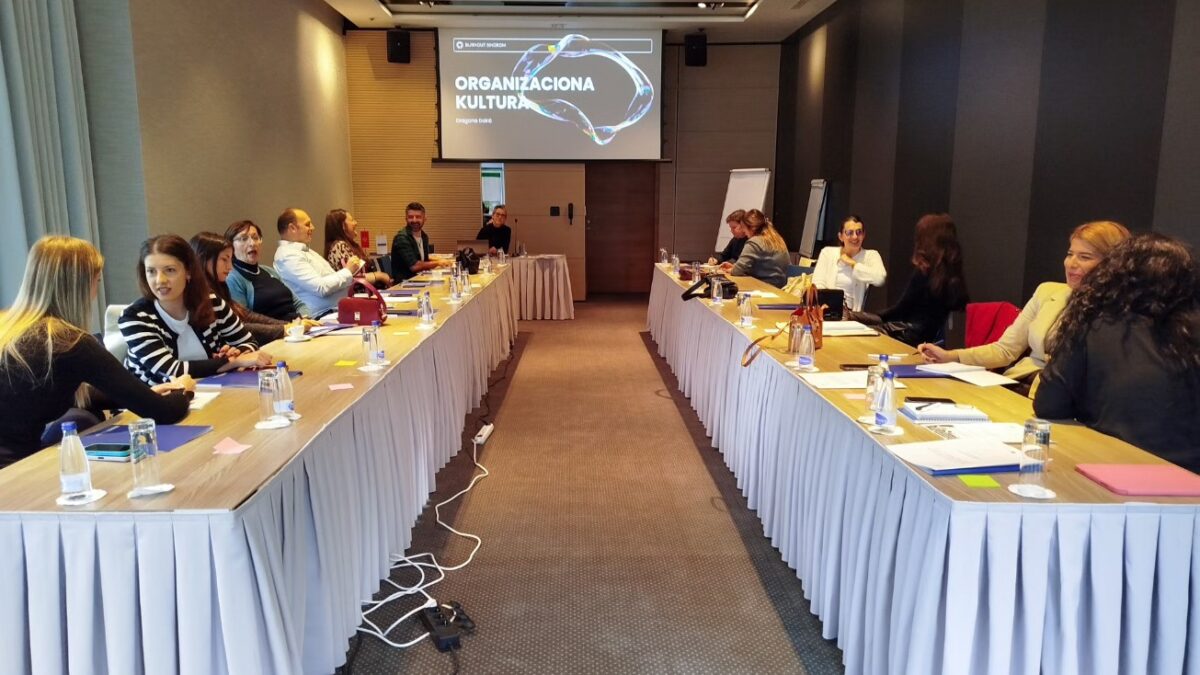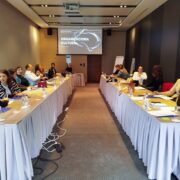
Between 2021 and 2024, the Trade Union of Media of Montenegro (TUMM) recorded 32 incidents in which the victims were women journalists, including 11 attacks in 2024 alone. During the same four-year period, 36 male journalists were attacked, while 28 other incidents targeted media outlets or groups, bringing the total number of attacks to 96. In 2024 alone, men were victims in five cases, women in eleven, and media groups in eight.
These findings were presented as part of a new study on the safety of women journalists in Montenegro, offering a detailed overview of the threats, pressures, violence, and discrimination faced by women working in the media.
The author of the research and TUMM Vice President, Marijana Camović-Veličković, said that this is the first study of its kind, based on statistical data from the SafeJournalists database maintained by the Trade Union of Media. In addition to this database, the research also draws on focus group discussions and interviews with women journalists, editors, a legal expert, a representative of civil society, the Ombudsman, the Police Directorate, and the Supreme State Prosecutor’s Office.
“Between 2021 and 2024, women journalists in Montenegro experienced various forms of attack. There were cases of serious physical violence and life-threatening incidents, but the most frequent forms of attack in recent years have been harassment and other types of threats,” said Camović-Veličković.
She noted that attacks were directed both at journalists working for major national outlets based in Podgorica and those working in smaller towns or for local media.
“During the research period, 32 incidents involving female victims were recorded in the SafeJournalists.net database. When we look at the four-year data as a whole, it’s clear that in the last two years – 2023 and 2024 – violence against women journalists has increased compared to men,” she added.

photo: Mediabiro
TUMM President Radomir Kračković said that, despite existing legal frameworks and international obligations in the areas of gender equality and media freedom across the region, women journalists continue to face significant and disproportionate threats, pressures, and intimidation.
“Violence against women journalists remains a persistent global problem, present in the Western Balkans as well, including physical assaults, online harassment, death threats, intensified surveillance, impersonation, and various forms of intimidation both online and offline,” Kračković said.
He added that evidence collected through the SafeJournalists network and other media freedom organizations shows that women working in the media are often targets of gender-based violence, including digital harassment, workplace discrimination, threats, intimidation, defamation lawsuits, and occasional physical assaults.

photo: Mediabiro
“Such ongoing violations not only undermine women journalists’ rights but also seriously affect their mental health, professional growth, personal safety, and overall well-being,” he added.
Camović-Veličković noted that in 2024, a total of 24 incidents were recorded in the SafeJournalists database — five involving male victims, eleven female, and eight targeting entire media teams or outlets.
She emphasized that women are disproportionately exposed to online violence, often facing sexist and misogynistic abuse.
“At present, three women journalists are under constant police protection, while two more were under periodic surveillance during 2024 — a clear indicator of the severity of the threats they face. No male journalist is under comparable protection,” she said, adding that the Ombudsman is the only institution that approaches the safety of women journalists through a gender-sensitive lens, recognizing elements of gender-based violence.
Women Journalists in Smaller Communities Are the Most Vulnerable
Camović-Veličković said that online harassment is the most common form of abuse faced by women journalists and that insults, death threats, and rape threats frequently go unpunished.
“Both interviewees and focus group participants agreed that the most vulnerable group consists of women journalists working in smaller towns and those covering crime and justice topics. They are followed by younger journalists, single mothers, and women in general — as they are perceived as ‘easier targets’ and more easily discredited through misogynistic and sexist attacks,” she said.
She noted that journalists facing economic insecurity, geographic isolation, or lack of organizational support face multiple risks.
“These women often remain isolated and unprotected, especially in cases of online abuse, since they lack access to resources that would ensure their safety and psychological stability,” Camović-Veličković said.
Women journalists usually report incidents to the police and prosecutors, but institutional responses are often lacking, particularly in online harassment cases.
“Court proceedings against portals running defamation campaigns are rare and slow, leaving the victim to defend herself, as prosecutors typically do not take up these cases,” she added.

photo: Mediabiro
She said that psychological support is extremely important, yet no media outlet in Montenegro offers systemic psychological assistance to its employees, leaving women journalists to rely mainly on the SMCG and NGO sector.
Moreover, she pointed out that many journalists are unaware of the legal support their employers are obligated to provide in cases of threats or attacks.
Gender Discrimination in Newsrooms
Camović-Veličković said that systemic gender discrimination is present in Montenegrin newsrooms, often ignored and unaddressed. This includes fewer opportunities for career advancement, discrimination related to pregnancy, motherhood, and parenting, and gender pay gaps.
“Women journalists testified that nearly every form of gender discrimination exists both in the newsroom and in the field, and that throughout their careers they have faced various degrees of it — particularly online. A new phenomenon that women journalists in Montenegro are only now beginning to face is ageism, reportedly even within the public broadcaster RTCG. One journalist over 50 said she was implicitly told that she was ‘too old for television,’” Camović-Veličković said.

photo: Mediabiro
RTCG, on the other hand, is the only media outlet that has formally addressed gender equality through its Gender Equality Plan 2023–2027, which notes that while women make up the majority of employees, only three out of eleven positions in the Director General’s cabinet are held by women.
In other media outlets, she added, editor-in-chief roles are rarely held by women, though they are more present in lower editorial positions that require extensive work and dedication.

photo: Mediabiro
“According to available data, more than 60% of media employees are women, yet none of the country’s three daily newspapers has a female editor-in-chief. In Vijesti, women hold 5 of 11 editorial positions; in Dan, 2 of 5; and in Pobjeda, 4 of 11. None of the three top management roles at RTCG (Director General, Director of Television, Director of Radio) are held by women,” she said.
Camović-Veličković noted that women do occupy director positions in local public broadcasters and several private national TV stations.
“Among the three print dailies, none has a female editor-in-chief, but women do hold director roles (as in Vijesti). In major commercial TV stations (Vijesti, Nova M, E, Prva), only one has a woman who serves as both editor-in-chief and executive director (Nova M),” she concluded.










